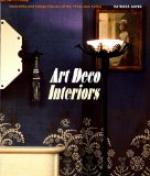One cannot speak of the gradual development of furniture and furnishing; it is more a case of waves of types, and the story begins on the crest of a wave in Assyria, about 3000 years before Christ! Yes, seriously, interior decoration was an art back in that period and can be traced without any lost links in the chain of evidence.
From Assyria we turn to Egypt and learn from the frescoes and bas-reliefs on walls of ruined tombs, that about that same time, 3000 B.C., rooms on the banks of the Nile were decorated more or less as they are to-day. The cultured classes had beautiful ceilings, gilded furniture, cushions and mattresses of dyed linen and wools, stuffed with downy feathers taken from water fowl, curtains that were suspended between columns, and, what is still more interesting to the lover of furniture, we find that the style known as Empire when revived by Napoleon I was at that time in vogue. Even more remarkable is the fact that parts of legs and rails of furniture were turned as perfectly (I quote Litchfield) as if by a modern lathe. The variety of beautiful woods used by the Egyptians for furniture included ebony, cedar, sycamore and acacia. Marquetry was employed as well as wonderful inlaying with ivory, from both the elephant and hippopotamus. Footstools had little feet made like lion’s claws or bull’s hoofs. According to Austin Leyard, the very earliest Assyrian chairs, as well as those of Egypt, had the legs terminating in the same lion’s feet or bull’s hoofs, which reappear in the Greek, Roman, Empire and even Sheraton furniture of England (eighteenth century).
The first Assyrian chairs were made without backs and of beautifully wrought gold and bronze, an art highly developed at that time. In Egypt we find the heads of animals capping the backs of chairs in the way that we now see done on Spanish chairs.
The pilasters shown on the Empire furniture, Plate XVI, capped by women’s heads with little gold feet at base, and caryatides of a kind, were souvenirs of the Egyptian throne seats which rested on the backs of slaves—possibly prisoners of war. These chairs were wonderful works of art in gold or bronze. We fancy we can see those interiors, the chairs and beds covered with woven materials in rich colours and leopard skins thrown over chairs, the carpets of a woven palm-fibre and mats of the same, which were used as seats.
Early Egyptian rooms were beautiful in line because simple; never crowded with superfluous furnishings. It is amusing to see on the very earliest bas-reliefs Egyptian belles and beaux reclining against what we know to-day as Empire rolls,—seen also on beds in old French prints of the fourteenth century. Who knows, even with the Egyptians this may have been a revived style!
One talks of new notes in colour scheme. The Bakst thing was being done in Assyria, 700 B.C.! Sir George Green proved it when he opened up six rooms of a king’s palace and found the walls all done in horizontal stripes of red, yellow and green! Also, he states that each entrance had the same number of pilasters. Oh wise Assyrian King and truly neutral, if as is supposed, those rooms were for his six wives!




